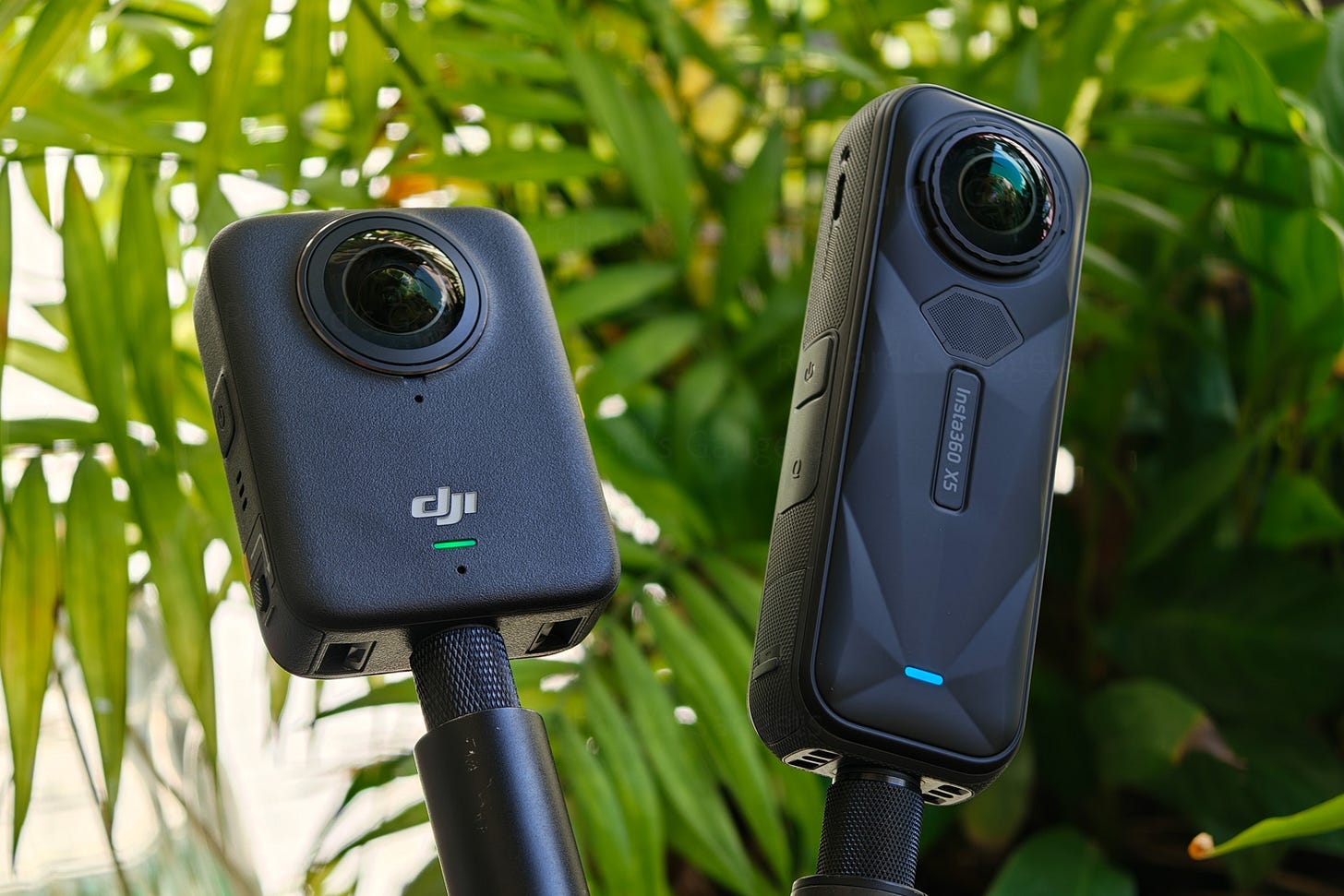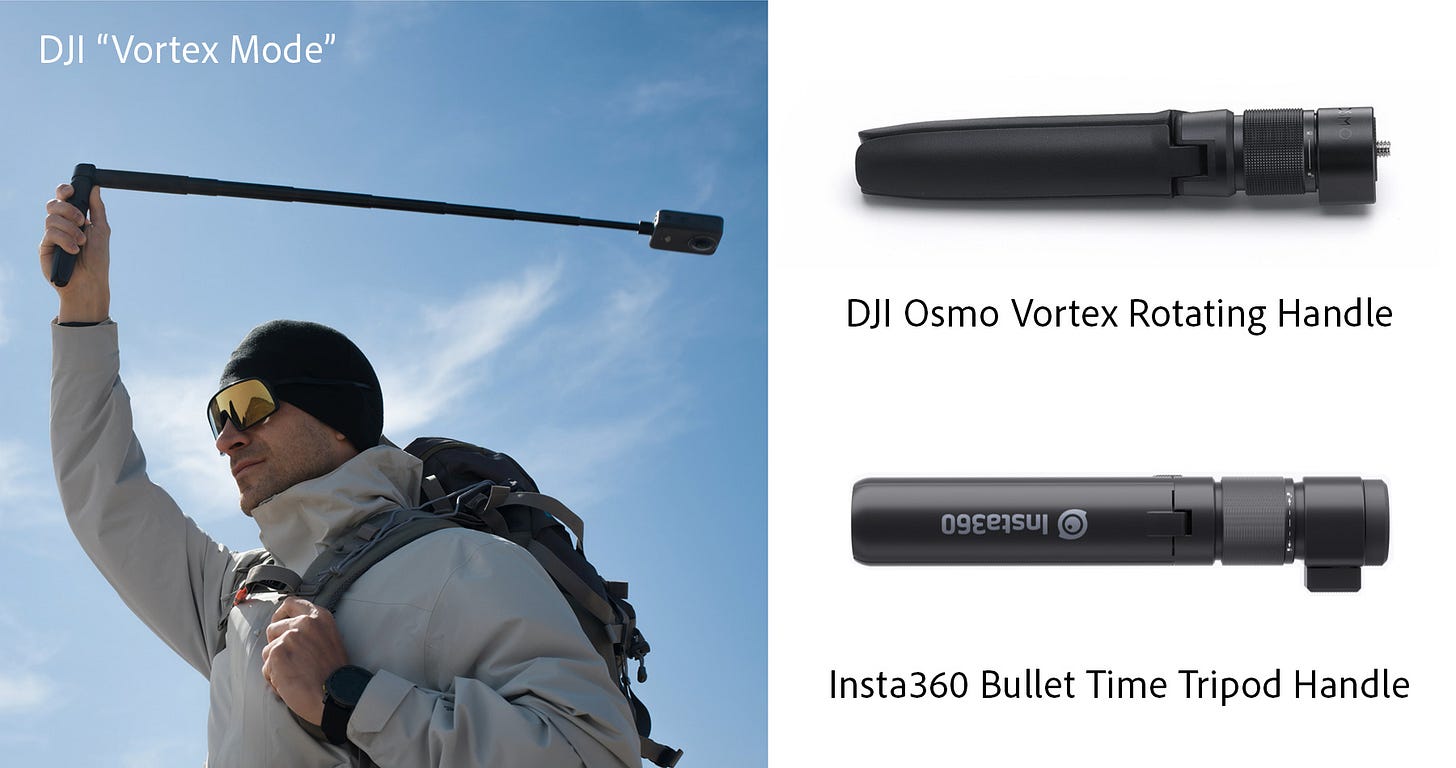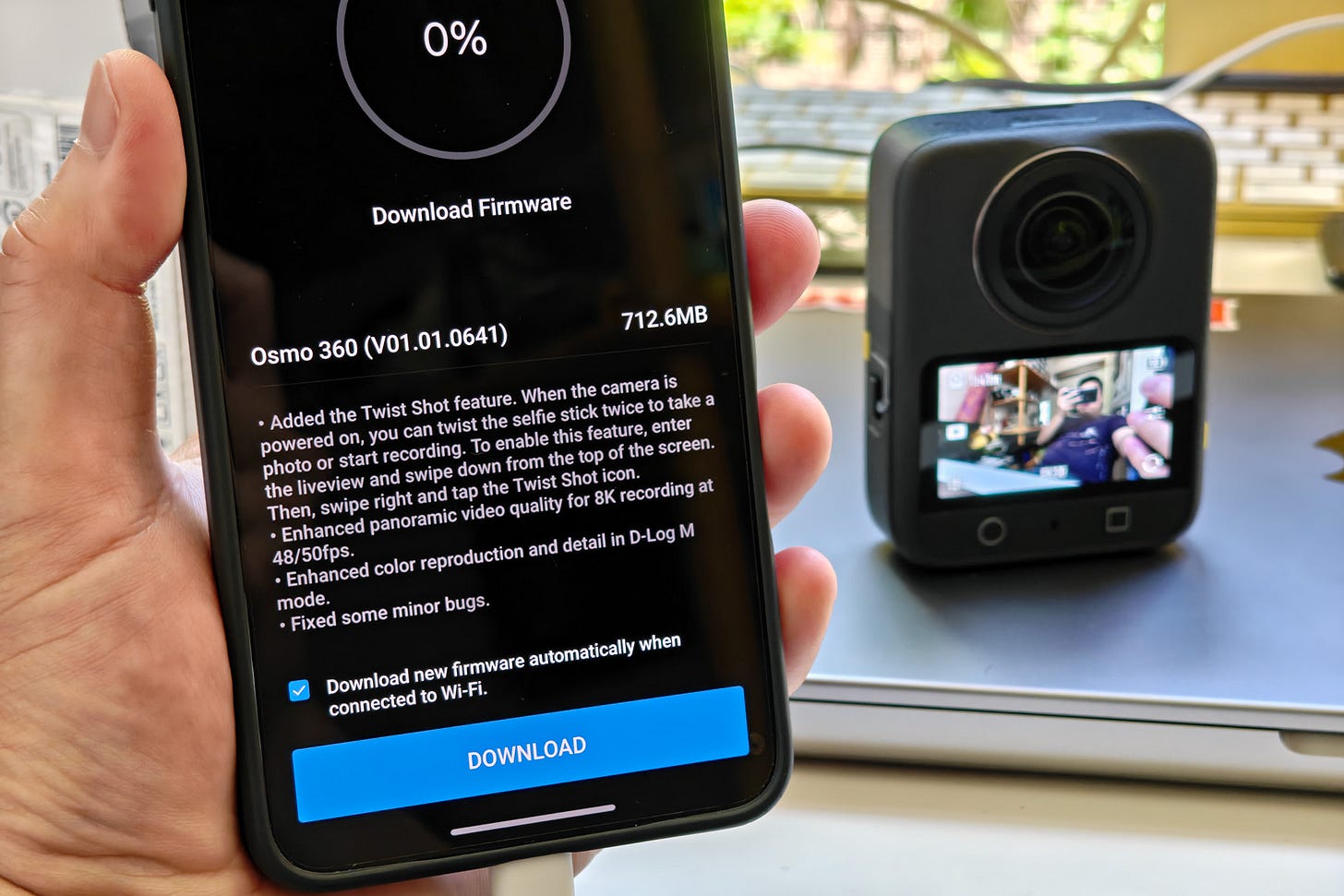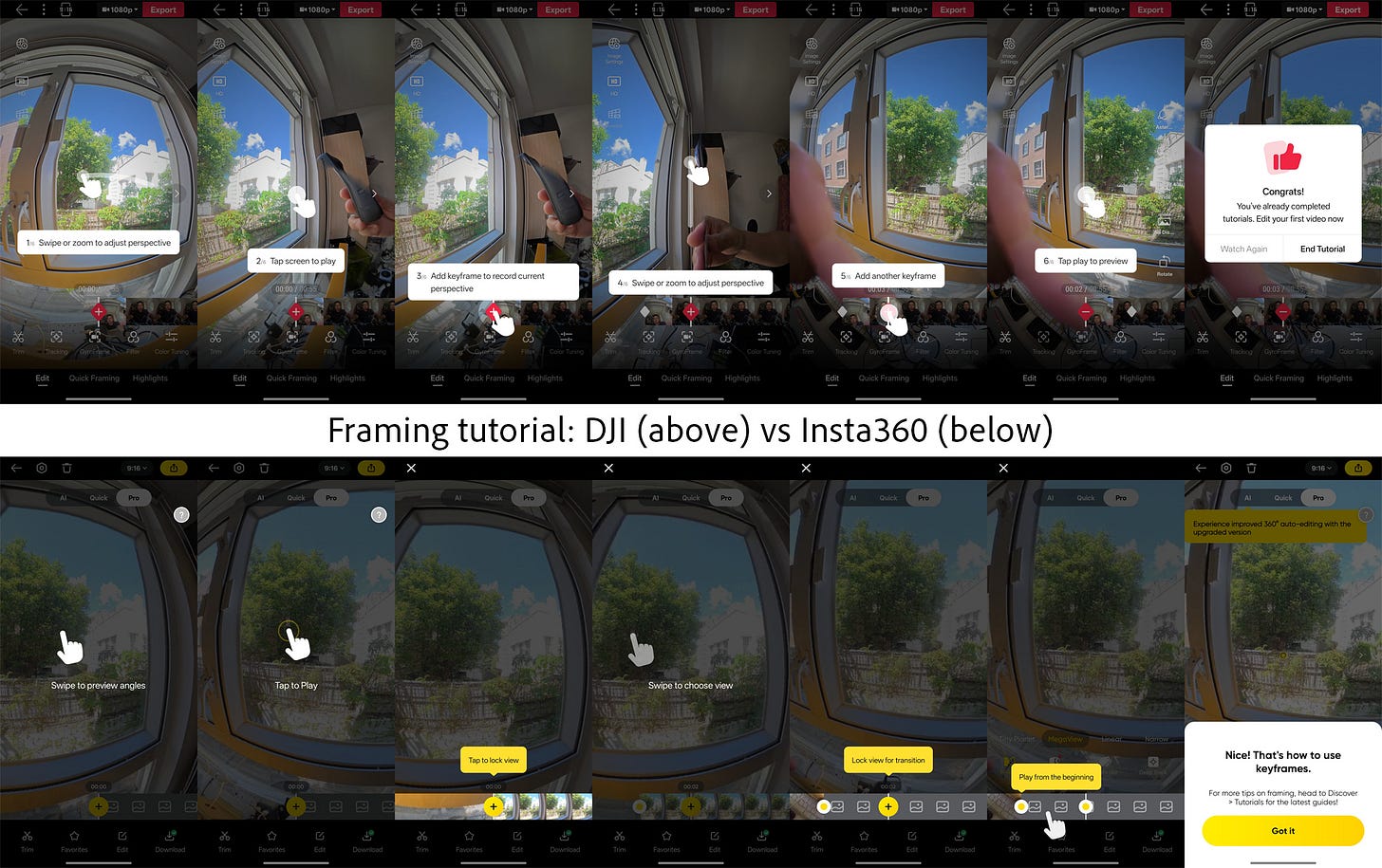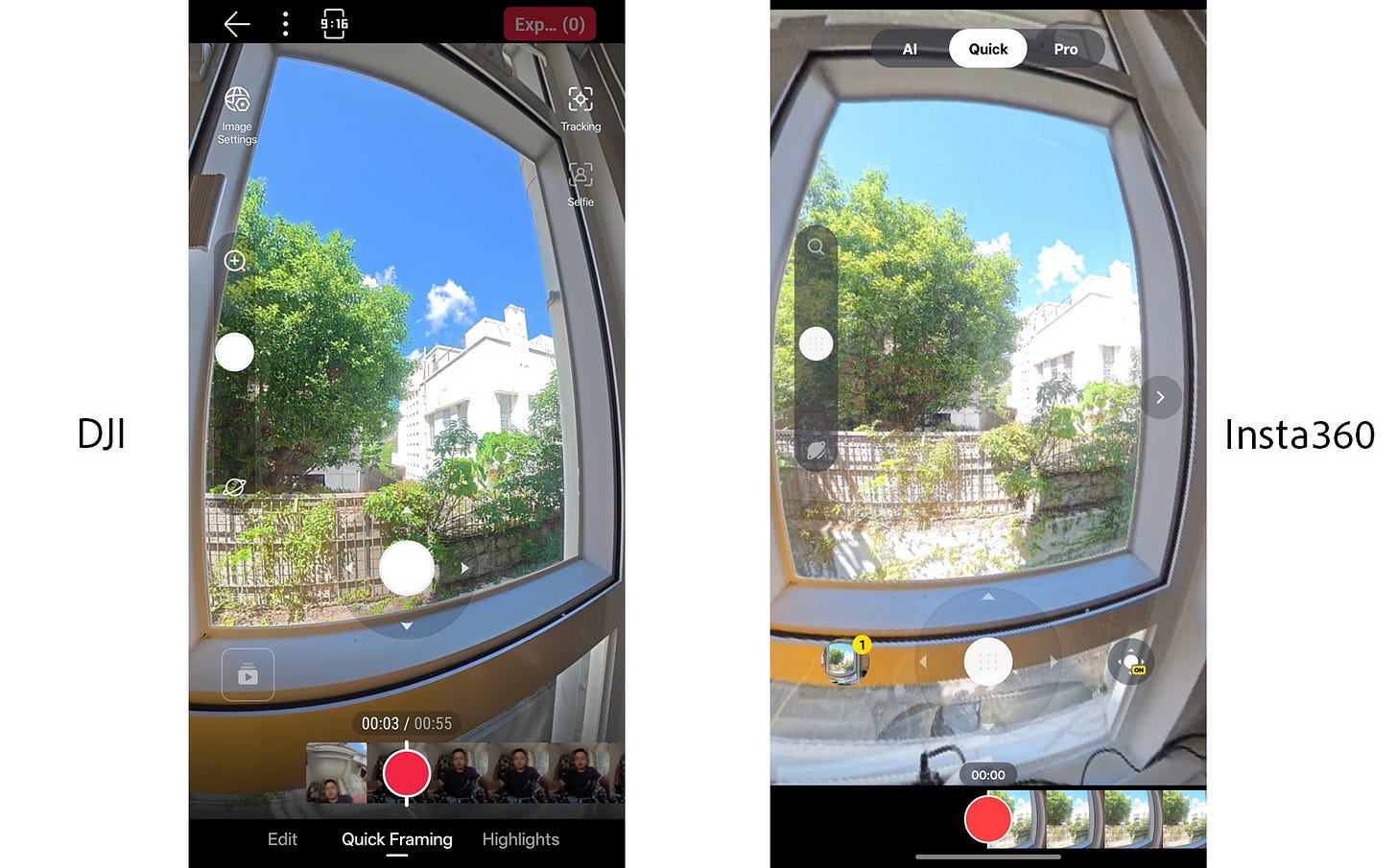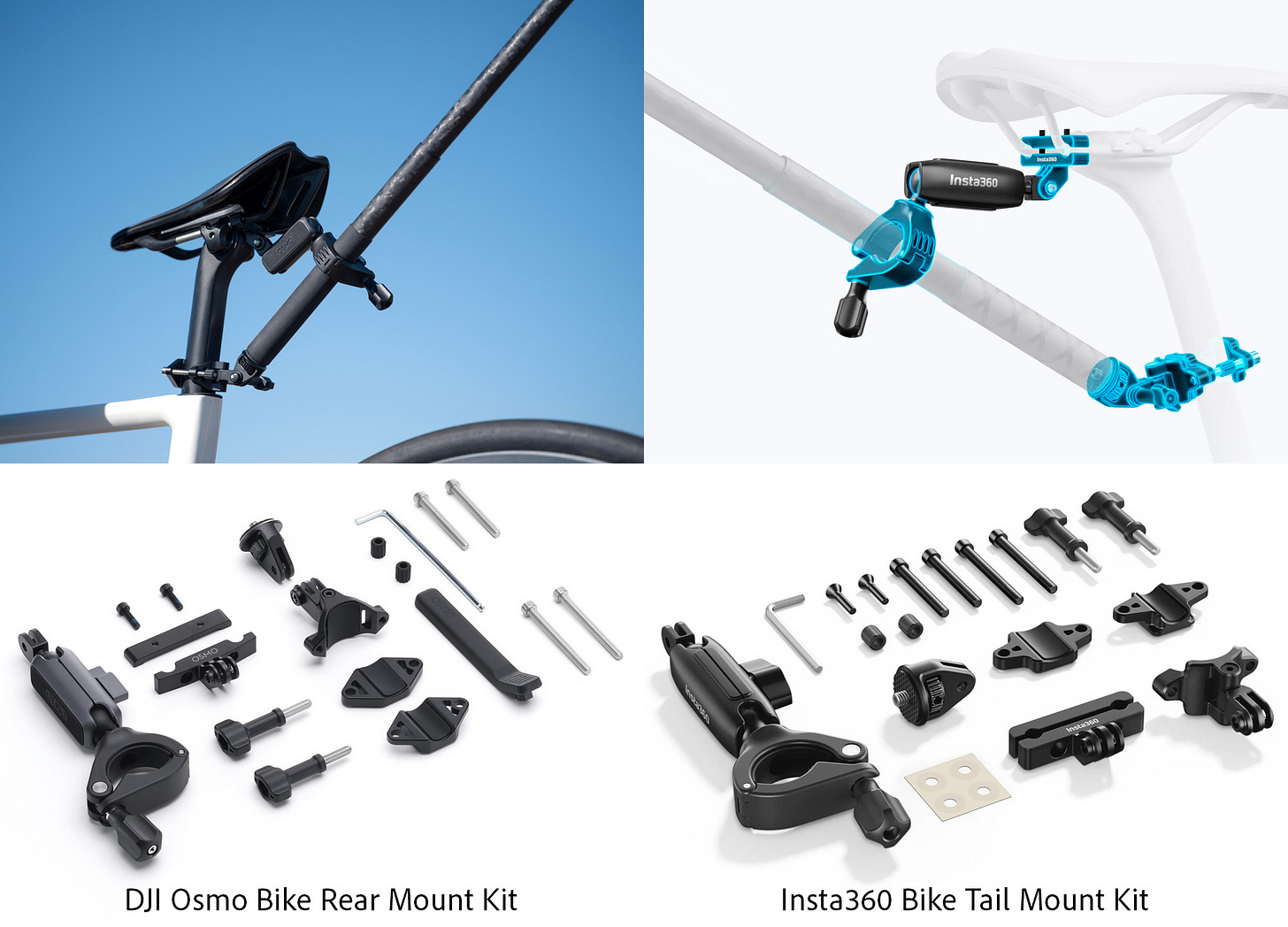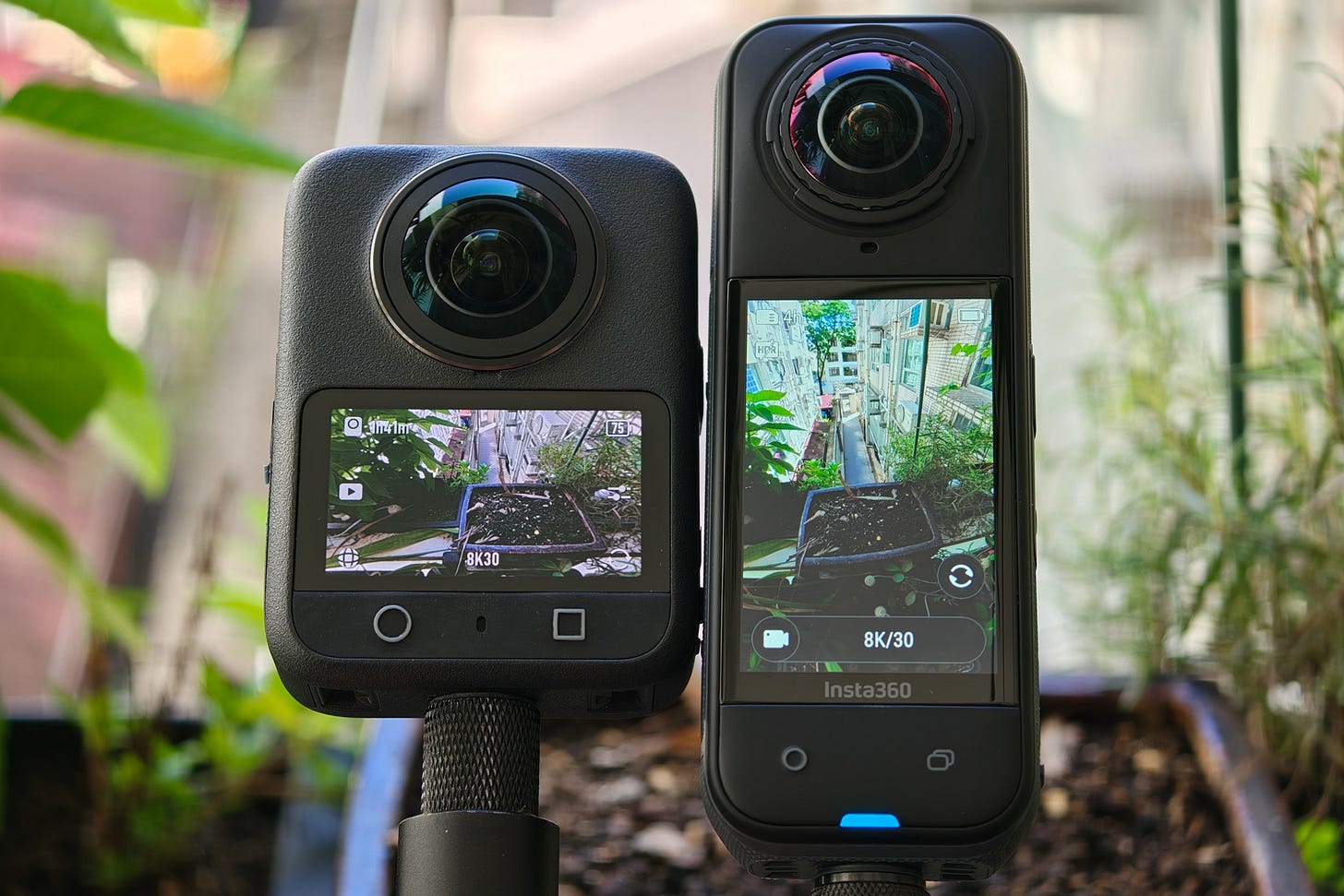From app to accessories: DJI's first 360 camera feels suspiciously familiar
Should Insta360 be flattered?
Cross-pollination in the tech world is nothing new. Most recently, DJI launched its first 360 camera, the Osmo 360, while Insta360 revealed its drone debut, the Antigravity A1, shortly afterwards. Even before that, both brands were already putting up a good fight in the action camera market — almost like a joint strike on GoPro. (And let's not talk about GoPro's failed drone attempt back in 2016.)
In the field of consumer-grade 360 cameras, many major brands — namely Samsung, LG and even Xiaomi — had long left this segment behind, with the remaining active players being Insta360, GoPro, KanDao, and Ricoh. This is why DJI's entry into this category got people intrigued.
That said, it didn’t take long before people spotted some amusing similarities between the DJI Osmo 360 and Insta360’s offerings. Sure, there are bound to be common points, but we’re talking about identical features — many of which were otherwise unique to Insta360 — from the app level down to components within accessories, as I found out myself.
As mentioned in my previous post, DJI’s “Vortex Mode” is the low-hanging fruit of this story. This is a cheeky take on Insta360’s classic “Bullet Time Mode” (since 2017, i.e. eight years ago), in which you spin your 360 camera above your head to output a cinematic slow-motion video. Likewise, DJI’s “Selfie Mode” is very much like Insta360’s “Me Mode” (since 2022), in which it turns your 360 camera into a selfie camera by automatically keeping the subject in frame, while keeping the selfie stick invisible — an optical trick Insta360 invented years ago as well.
Another example is DJI’s “Twist Shot” feature, which is clearly inspired by Insta360’s “Twist to Shoot” — launched with the X5 in April 2025 — for quickly starting and stopping a video capture. Funnily enough, DJI only added this feature via an update in early September — one month after the Osmo 360’s launch, and over four months after the Insta360 X5’s launch.
The similarities become more ridiculous in the apps. DJI Mimo, the companion app for DJI’s handheld cameras, feature many UI elements, menu layouts and interactions that are almost indistinguishable from Insta360’s mobile editing tool — at least the version before V2.0 (but the later versions still let you switch back to the old interface in the app’s settings). The strong resemblance already shows up right at the beginning by way of the framing tutorial, with the steps, flow and interface seemingly inspired by Insta360’s years-old design.
Likewise with the tutorial for tracking — from the drag-to-track animation to how the tracked subject and timeline are highlighted in green. Insta360 users will no doubt find this all too familiar.
It’s the same story with DJI’s “Quick Framing” mode, which echoes Insta360’s “Quick Edit” with its gyroscope motion control, as well as virtual joystick and field-of-view slider — both of which share the same graphics and similar positions with their Insta360 counterparts. It’s rather appalling that DJI is using the same orange edge glow and arrow to indicate the touch interaction on the joystick.
I’d like to take a quick moment to point out that DJI even used a similar zoom bar — down to the level of the tiny planet (“asteroid,” as per DJI) icon and animation — on the left side of its “Quick Framing” interface. The only notable change here is that DJI’s bar doesn’t disappear as quickly as Insta360’s, so kudos to DJI for making a tiny difference.
DJI’s settings tab in the video editor is more shameless, featuring the same layout and similar wording as Insta360’s. Even the order is the same: file info, preview mode and stabilization; each with an almost identical set of elements. That said, DJI swapped Insta360’s download button with a delete button — probably as an in-joke.
While DJI’s Osmo 360 looks nothing like any of the Insta360 devices, it’s quite the opposite when it comes to accessories. Unsurprisingly, DJI’s “Osmo Vortex Rotating Handle” shares the same core functionalities — including the twist lock — with Insta360’s “Bullet Time Tripod Handle.” The only real difference here is the shape of the foldable legs and hinge body.
DJI’s “bike rear mount kit” is just blatant. It’s the same dual-clamp implementation, with the large support clamp being almost a carbon copy of Insta360’s. Even a couple of its teardown images are laid out in a fashion similar to Insta360.
On a related note, DJI’s motorcycle heavy-duty mount looks very similar to Insta360’s designs, but it’s definitely less of a carbon copy when compared to the bike rear mount kit.
Perhaps one could argue that there’s only so much variation you can do with accessories, but in this case, it’s clear that DJI is actively borrowing designs in both hardware and software departments, while undercutting the competition. The recently-leaked Osmo Nano modular action cam is perhaps yet another example of such malice, with its inspiration seemingly drawn from the Insta360 Go Ultra. Then there’s also DJI’s very own 360 drone in the leaks, and this is clearly going right after Insta360’s Antigravity A1.
Given its track record, chances are DJI will push out these new products at prices lower than their direct competitors. Of course, consumers always love a good bargain, but if companies are rewarded for derivative products rather than original breakthroughs, it’ll become a race to the bottom for the industry. Ultimately, such actions will only make DJI appear desperate — not exactly a quality you’d expect from a market leader.



